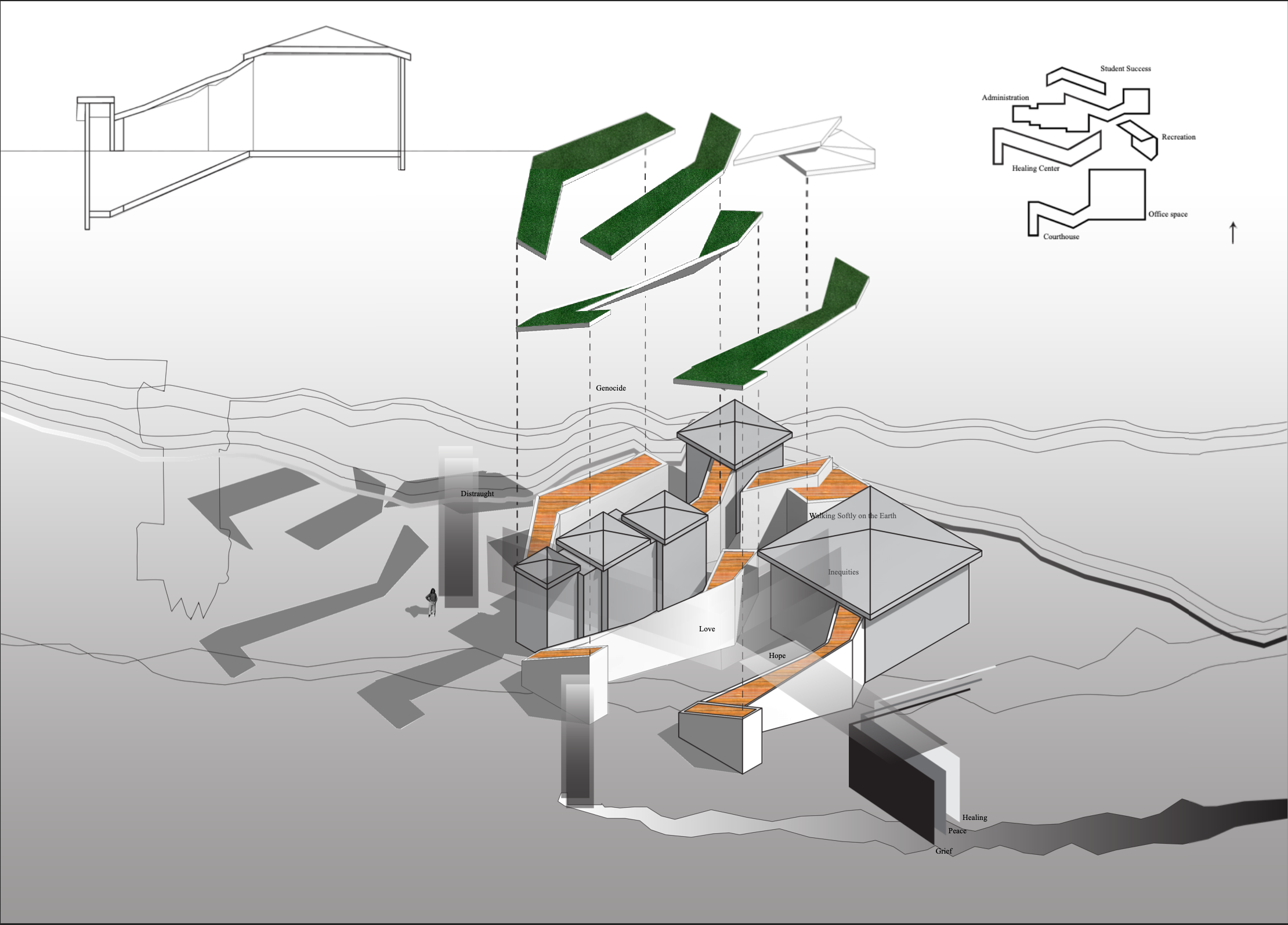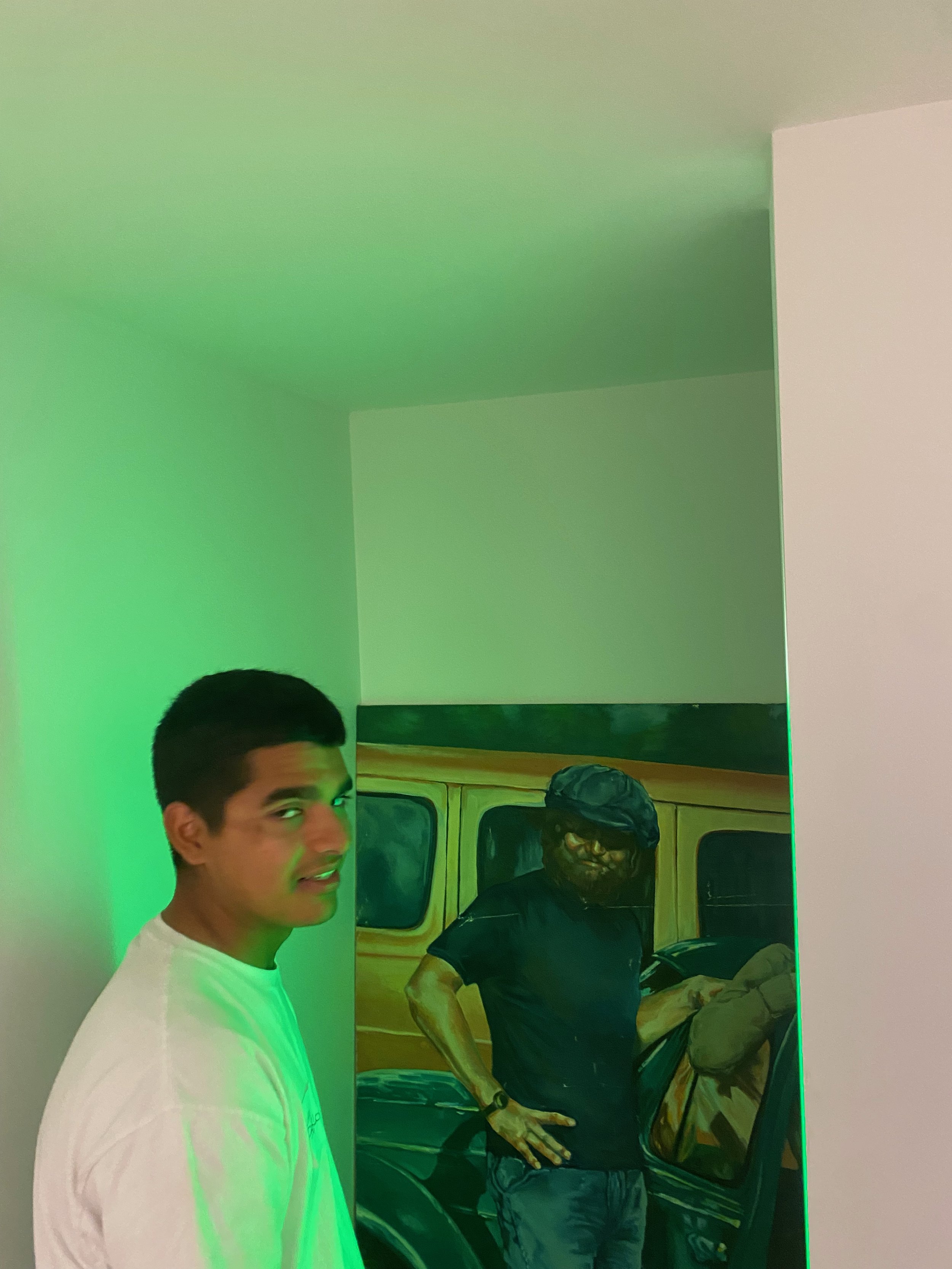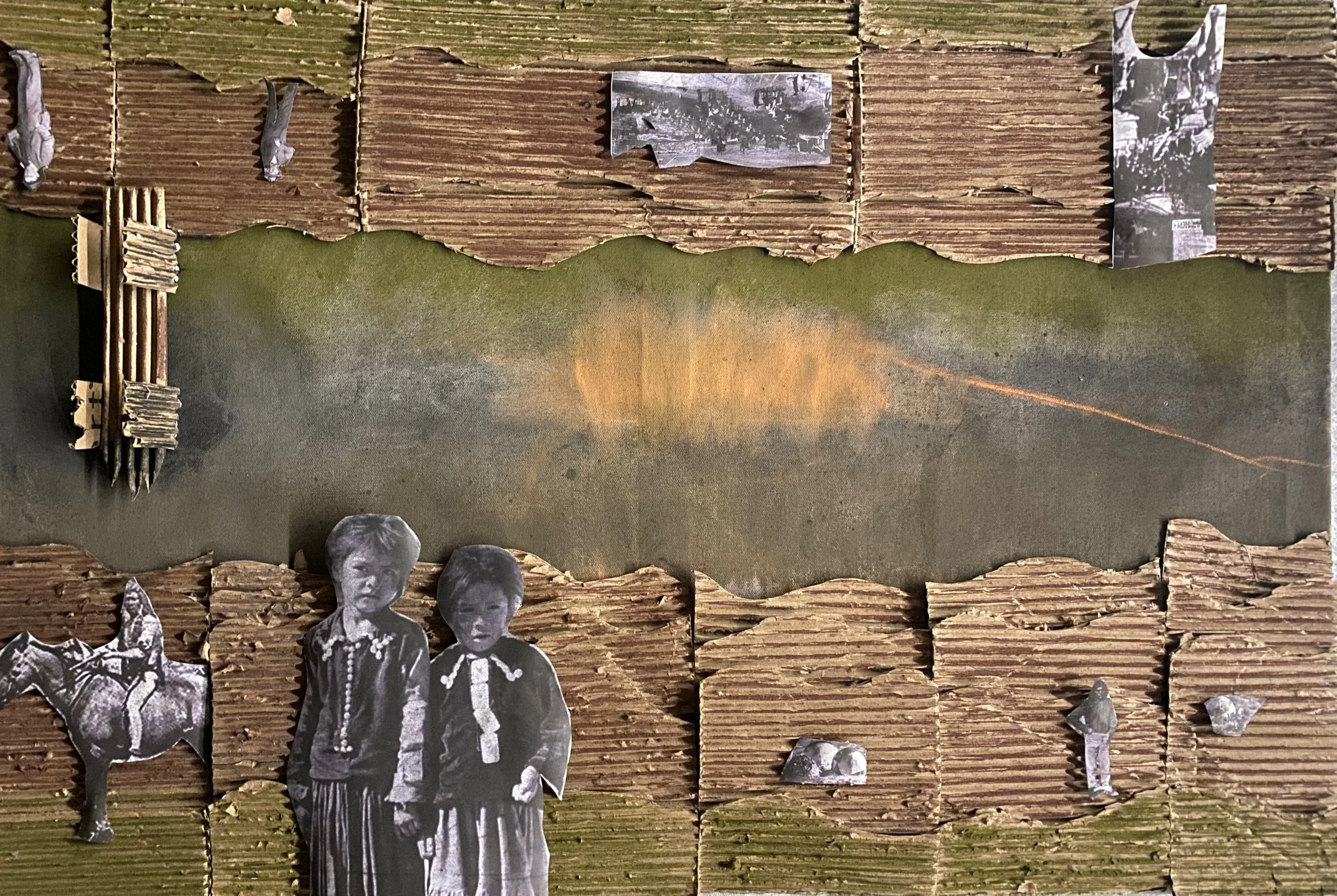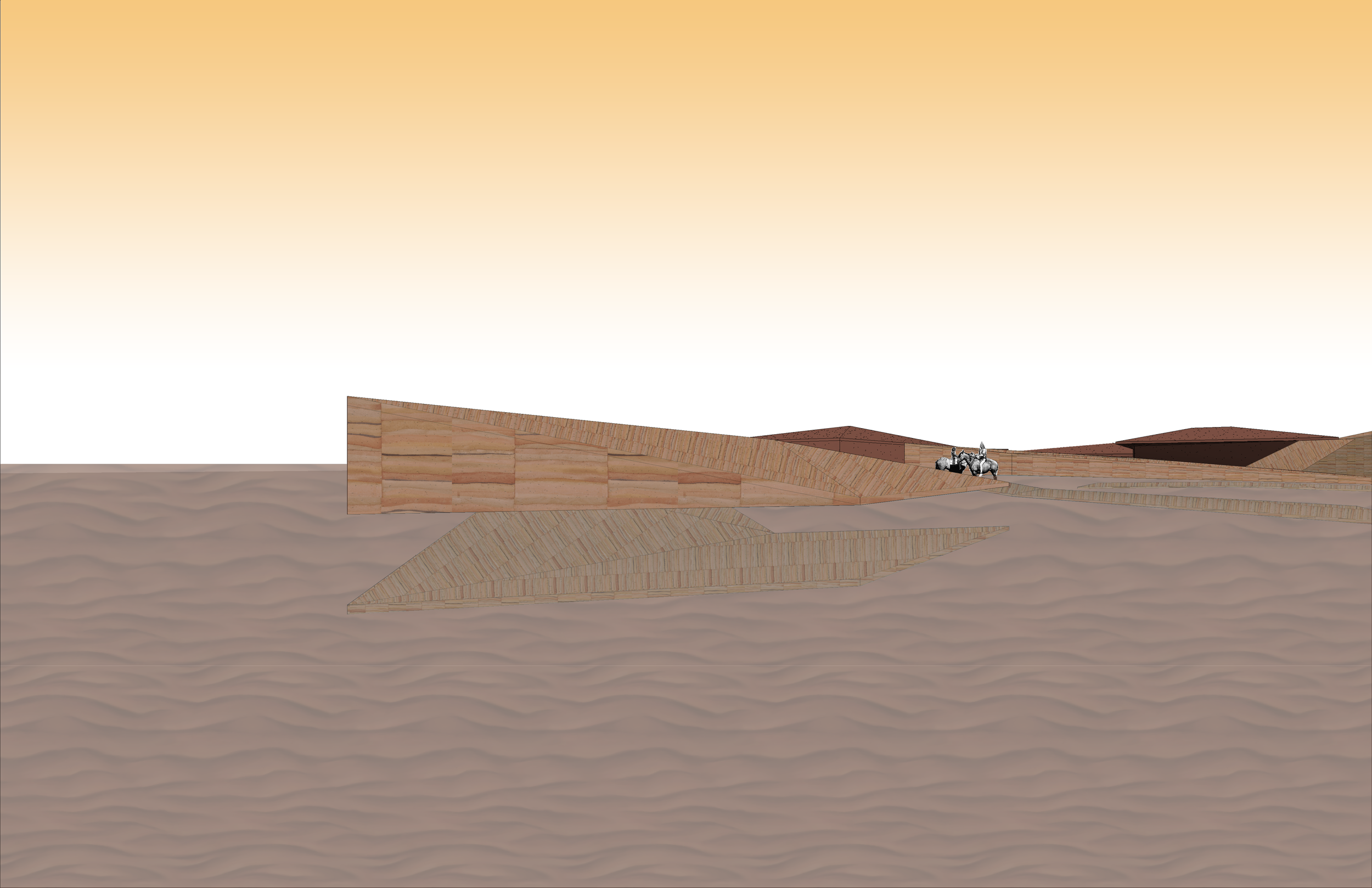Retribution
In Spring 2022, Professor Claudio Vekstein led his Senior Cohort to focus on research that’ll contribute to a new Justice Center for an aboriginal community in Arizona. The studio was in collaboration with ASU’s Indigenous Design Collaborative (IDC), a program that brings an interdisciplinary team of ASU students and faculty with the goal to aid indigenous communities to co-design and co-develop solutions within Arizona. Colorado River Indian Tribes (CRIT) are victims of displacement of Indigenous peoples dating late 1800s. CRIT is complied of 4 local tribes to Arizona - Dine’ (Navajo), Hopi, Mohave, Chemehuevi - and around 4,000 tribal members. The Uniqueness of CRIT was the mixture of 4 different tribes, all unique in their own indigenous ways of life, beliefs, and culture. Being Navajo, I played a crucial part to my peers understanding of anguish American Indians experience from colonization in contemporary western society. Objects allowed me to depict two worlds that are experienced while trying to heal as an Indigenous Individual.
Site Exploration
CRIT was located near the western part of the state Arizona, neighboring California. During a site visit, a 5 hour drive from Arizona State University Tempe Campus we began to understand the disproportionate context that lives within the borders of Arizona. Poverty, lack of infrastructure, intense heat, no access to resources were very apparent upon visitation of the current justice center located in the middle of the reservation.
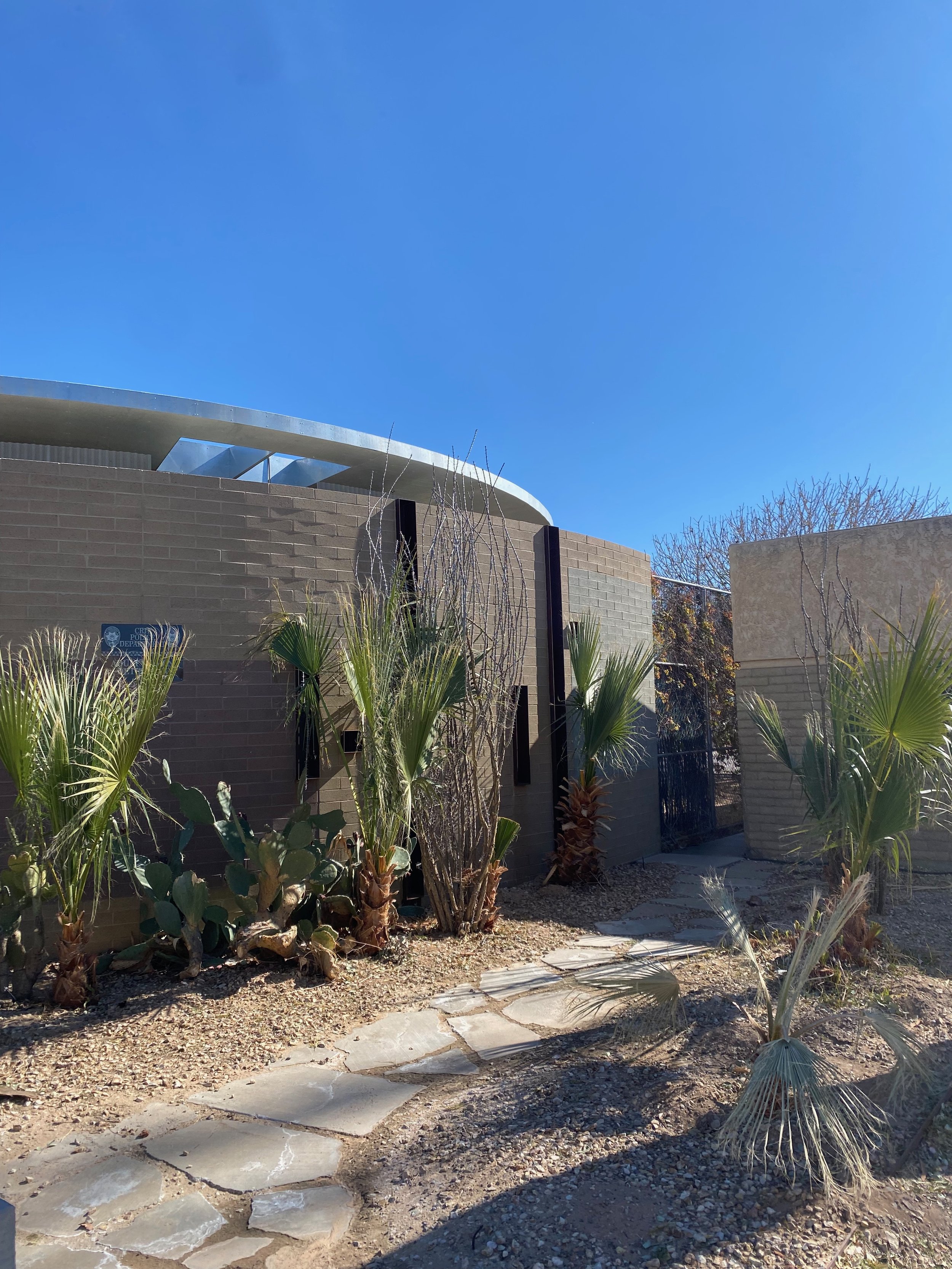
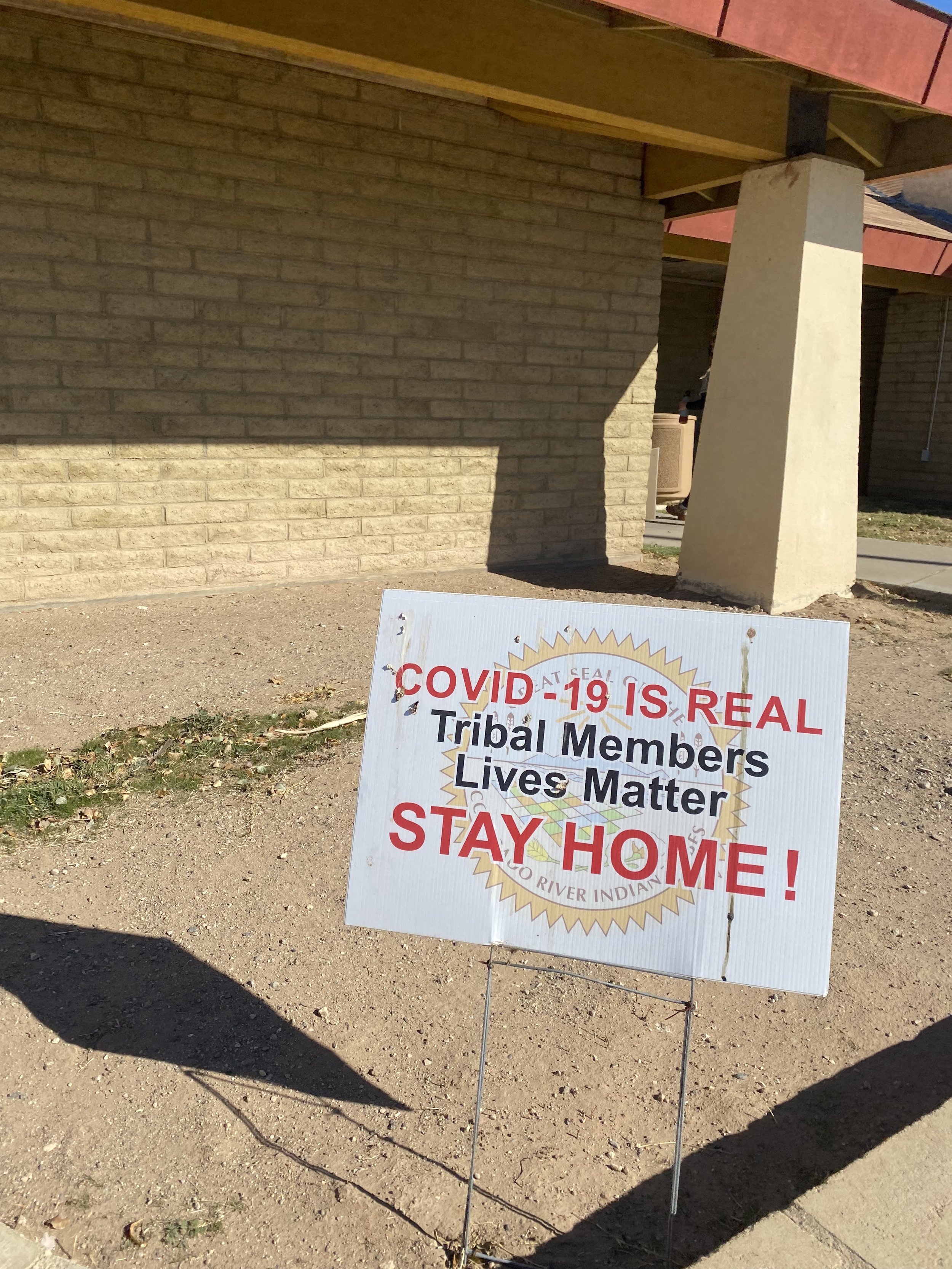

Bridges
Upon conclusion of the semester, we were asked to compile research in one loose perspective drawing. I expressed the climate through the colors that are common on all reservations in Arizona, desolate landscapes where forced migration took place. Inspired by my peoples (Dine’) Hogan which is made of clay and sits within the ground plane, I interpreted shapes that accommodates all tribes of belonging to CRIT in order to appropriately represent a culmination of cultures. Finally, rammed earth is the material being sourced because of the influx that is so apparent in the region. Using sustainable material is the basis of an Indigenous approach to constructing architecture. This is because, indigenous people are stewards of mother earth, maintaining the health of mother earth by not using material that is destructive to her well-being in any fashion.
